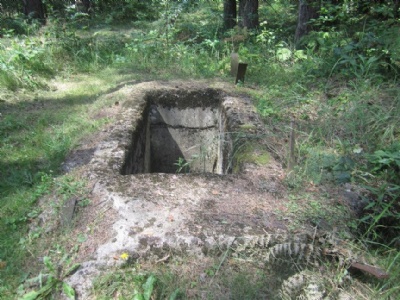Blizna
In August 1943, the German production and test facility for V2 rockets was bombed in Peenemünde. To minimize future damage, the Nazis decided to move the production and testing facility to three different locations. The production was located inside the Harz Mountains (Nordhausen), Germany, the design was placed inside the mountains at Lake Trausee (Ebensee), Austria, and the test facility was placed in a small village called Blizna, about 100 kilometres east of Krakow. Since 1940, there was a military training area in the area called, SS Truppenubungsplatz Heidelager, which thus served as a form of camouflage for the testing program. The new test facility was called, Artielleriezielfeld Scar, and in charge for the construction was SS-Gruppenführer, Hans Kammler. The inhabitants of the village were forcibly evacuated. A new concrete road and a railway line were built. Within the existing military training area, other necessary buildings were established such as storage rooms, garages, storage rooms of rockets, assembly workshops, launch ramps, observation bunkers, shelters, etc. All buildings were linked by small roads and a narrow gauge railway to transport the rockets.
The first test firing of a V2 rocket took place on November 5, 1943, and was conducted by a test group from Peenemünde called Lehr- und Versuchbatterie 444. Additional groups were added and in total about 200 test shootings of V2 rockets were conducted. In spring 1944, regiment 155 arrived which began launching V1 rockets at targets between Lublin and Chelm. The military troops that took part in the tests in Blizna were then transferred to Western Europe where they became part of the units that fired rockets at London. Confidentiality around the test facility was rigorous, but the heavily guarded train transports in Blizna direction made the Polish resistance movement suspicious that something secret was going on. The suspicions were confirmed and the resistance movement collected information which was sent to London. London was interested in whether it would be possible to steal a rocket. By chance, the resistance movement in May 1944 managed to lay hands on a relatively intact V2 rocket that had plunged into a river. The rocket was dismantled and smuggled in parts to London. In the summer 1944, the Nazis began to dismantle the testing facility as the Soviet Red army approached. Everything of value was transferred to Tuchola in northern Poland, where tests were resumed. The polish home army took the test facility in July 1944 and in early August of the same year the Red army arrived.
Current status: Demolished with museum (2013).
Location: 50° 11' 22.49" N 21° 36' 29.12" E
Get there: Car.
Follow up in books: Kennedy, Gregory P: Germany´s V-2 Rocket (2006).








The museum is called Park Historyczny Blizna and is a small fenced park with a lot of objects on display, including replicas of both V1 and V2 rockets. Other objects found during excavations or left by the Germans are also displayed. Information boards with English translation are placed along paths that connects the outdoor exhibition. There is also a small museum with a lot of smaller objects. Outside the park there are information signs at former barracks, storage rooms, launch ramps, bunkers, etc. The balance between text, objects, photographs and historical remains made a positive impression on me. The disadvantage is its geographical location far out in the countryside and far from the nearest major city, just over two hours by car from Krakow.